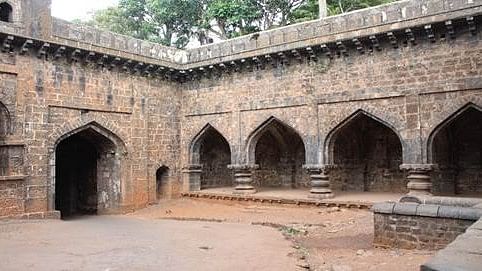
The Maratha Military Landscapes of India is the country's nomination for UNESCO World Heritage List.
Credit. X/@PIB_India
Mumbai: Maharashtra burst into joy as India nominated “Maratha Military Landscapes of India” for recognition as UNESCO World Heritage List for the year 2024-25.
The twelve component parts of this nomination are, Salher Fort, Shivneri Fort, Lohgad Fort, Khanderi Fort, Raigad Fort, Rajgad Fort, Pratapgad Fort, Suvarnadurg Fort, Panhala Fort, Vijaydurg Fort, Sindhudurg Fort in Maharashtra and Gingee Fort in Tamil Nadu.
Most of these are linked to the life and times of Chhatrapati Shivaji Maharaj, the legendary Maratha warrior.
The Maratha Military Landscapes of India, which developed between 17th and 19th centuries, represent an extraordinary fortification and military system envisioned by the Maratha rulers.
Chhatrapati Shivaji Maharaj (19 February 1630 – 3 April 1680) was coronated in Raigad Fort on 6 June, 1674 - and it is from here he laid the foundation of ‘Hindavi-Swarajya’ of self-rule of the Hindu-people. The coronation of Chhatrapati Shivaji Maharaj - the 350th anniversary of which is being celebrated - is an important landmark in the history of the Indian sub-continent.
“This is great news,” said veteran mountaineer and mentor Umesh Zirpe, the President of Akhil Maharashtra Giryarohan Mahasangha (AMGM), the apex body of mountaineering in the state and the Director of Guardian Giripremi Institute of Mountaineering.
“It is a great decision, it would go a long way in conservation initiatives,” added Ramnath Amberkar, veteran writer and fort expert.
The Maharashtra government has welcomed the decision.
Deputy Chief Minister Devendra Fadnavis thanked Prime Minister Narendra Modi and the Ministry of Culture for the UNESCO nomination.
“The Government of India has submitted a proposal to UNESCO to include the area of the Maratha military landscapes, forts during the time of our idol Chhatrapati Shivaji Maharaj in the UNESCO World Heritage List. This proposal has been submitted for the year 2024-25,” Fadnavis said.
Senior BJP leader Sunil Deodhar said: “A moment of pride for every Maharashtrian! Maharashtra's historic forts, including Raigad, Rajgad and Shivneri, securing a spot on UNESCO's heritage list is a testament to the rich tapestry of the Maratha Empire's history.”
As far as the nomination is concerned, the components, distributed across diverse geographical and physiographic regions, showcase the strategic military powers of the Maratha rule.
The Maratha Military Landscapes of India, which developed between 17th and 19th centuries, represent an extraordinary fortification and military system envisioned by the Maratha rulers. This extraordinary network of forts, varying in hierarchies, scales and typological features, is a result of integrating the landscape, terrain and physiographic characteristics distinctive to the Sahyadri mountain ranges, the Konkan Coast, Deccan Plateau and the Eastern Ghats in the Indian Peninsula.
There are more than 390 forts in Maharashtra out of which only 12 forts are selected under the Maratha Military Landscapes of India, of these eight forts are protected by the Archaeological Survey of India.